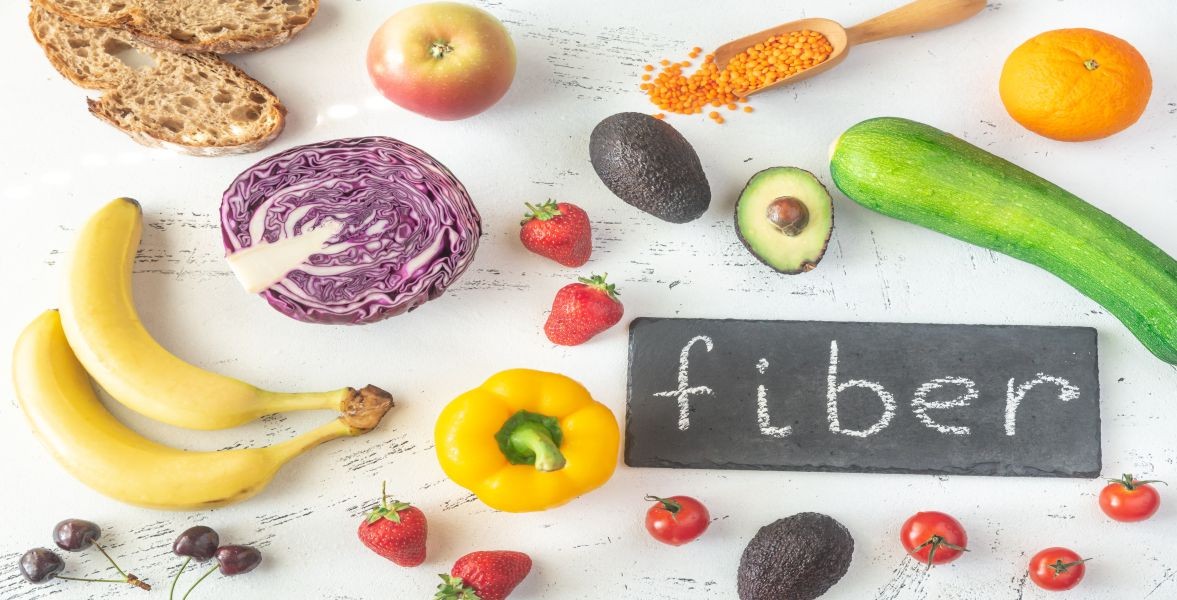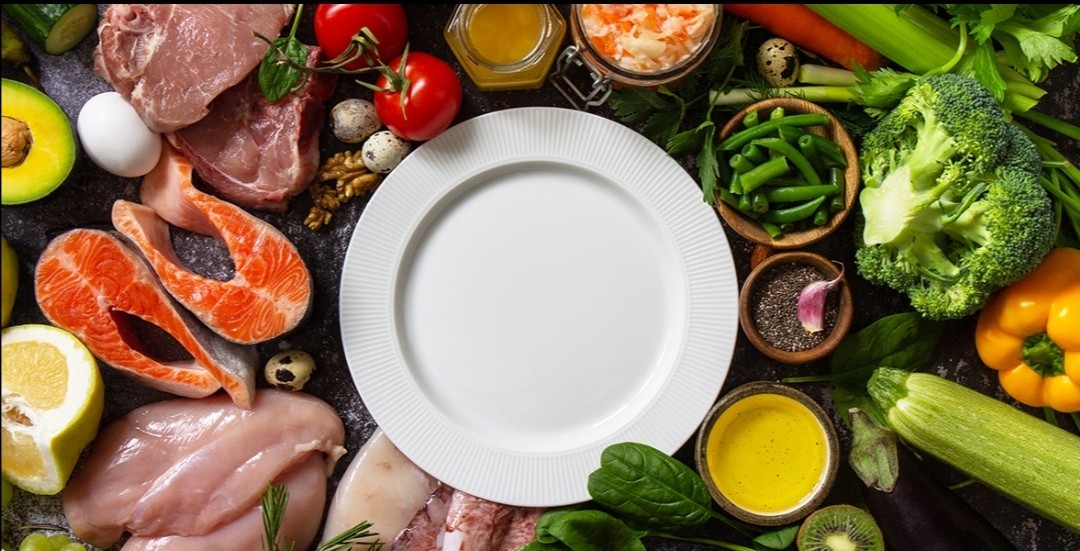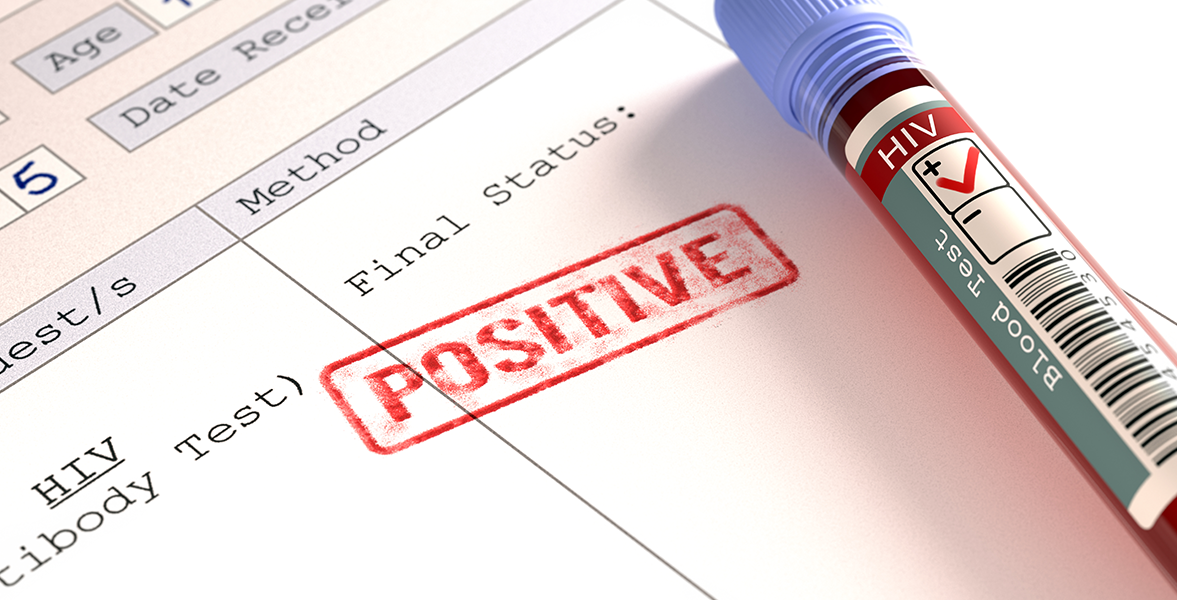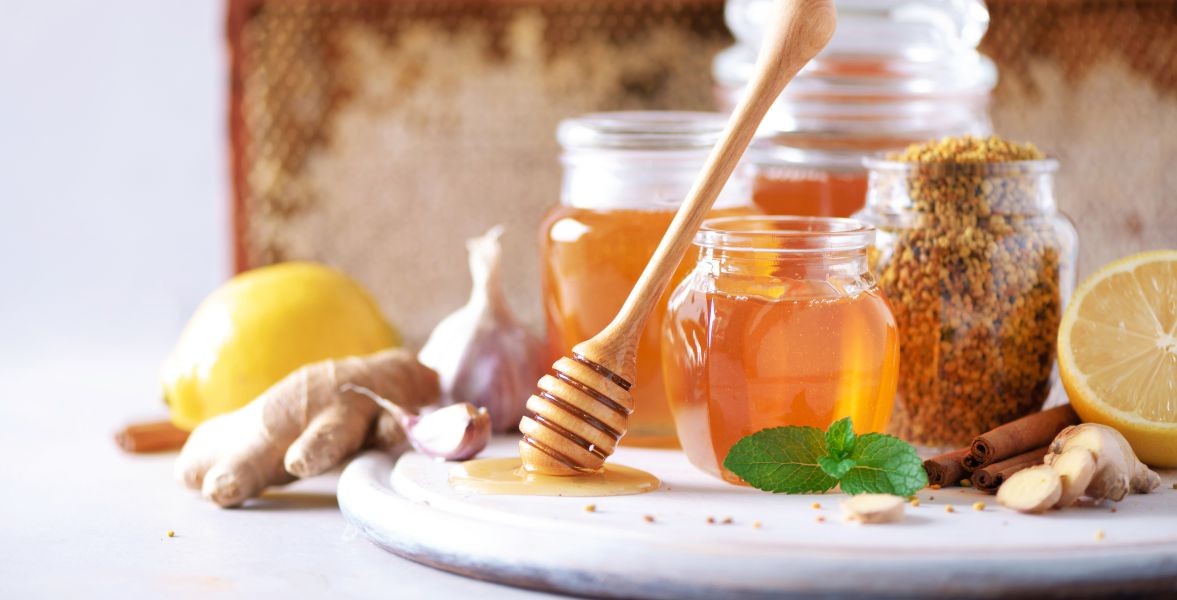
Created by - Dr. Prashant Raj
HOW TO PREVENT HEMORRHOIDS
Hemorrhoids, often known as piles, are enlarged veins in the lower rectum and anus that resemble varicose veins. Hemorrhoids can affect anyone. There are several internal and exterior blood veins close to the anus that supply the entire region with blood. These blood vessels don't typically cause problems that can be very painful until they start to swell and get irritated. Maintaining soft stools that pass smoothly is the greatest approach to avoiding hemorrhoids. Follow these recommendations to prevent hemorrhoids and lessen their symptoms:USE THE RESTROOM WHENEVER NECESSARYAlthough it seems like basic sense, a lot of individuals choose to disregard it. If you put off going to the bathroom, your stool (poop) may harden and dry out in your gut, making it more difficult to move. Your chance of developing hemorrhoids rises if you struggle to pass faeces. If we talk about straining, resist the urge to go when you're not ready. Hemorrhoids are caused by straining because it puts more pressure on your venous cushions. Strenuous activity, in particular, can cause internal hemorrhoids to become outward.AVOID MAKING THE BATHROOM A READING PLACEConsider your visit to the restroom as a need, not an extended escape. Don't use your phone in the bathroom to play games, or browse social media. You're more likely to strain for bowel movements the longer you stay on the toilet. Additionally, your anal blood vessels are put under more strain while seated. Your risk of hemorrhoids is increased by both of these conditions.EAT SUFFICIENT FIBERThe main cause is typically a lack of fiber. For instance, if you get constipation, try increasing your intake of fiber from fruits, whole grains, and leafy green vegetables. Fiber can prevent constipation, which increases straining and increases the risk of hemorrhoids. A natural technique to increase bowel motions is by consuming adequate fiber. By taking supplements or eating foods that are high in fiber, you may easily add more to your diet. Consider your body's signals and steer clear of foods that make your bowels uncomfortable. The lactose in dairy products can irritate certain people. Others blame gluten or consuming too many processed meals. Great food sources of fiber include:Legumes, such as split peas, lentils, black beans, lima beans, and baked beans, as well as whole grains like barley, bran flakes, oats, and brown rice.Fruits such as apples, pears, raspberries and bananas.Vegetables like artichokes, broccoli, Brussels sprouts and green peas.CONSUME A LOT OF WATERYou need soft, easily passed stool to avoid hemorrhoids. Drinking a lot of water every day is another easy strategy to prevent hemorrhoids. Adequate hydration promotes healthy bowel movements. Keeping your body hydrated with plenty of water will help you avoid constipation and straining during bowel motions.EXERCISE REGULARLY TO KEEP YOUR BODY IN MOTIONTo maintain general health, exercise is advised. Additionally, it is a fantastic technique to maintain healthy gut function. Certain activities, however, may have the reverse impact by putting additional tension or pressure on your abdominal muscles. Exercises like weightlifting can aggravate existing hemorrhoids and lead to the development of new ones. Try to find mild exercises walking, swimming, or yoga, to prevent hemorrhoids.VISIT A PHYSICIANVisit your doctor and have your symptoms assessed if your symptoms change or your bleeding worsens. Surgery is not always necessary to treat hemorrhoids. To rule out other illnesses, you might need an evaluation.
More detailsPublished - Thu, 23 Jun 2022

Created by - Dr. Prashant Raj
A Healthy Vegan Diet
A vegetarian diet is devoid of any animal products, like meat, eggs, milk, and honey. It consists completely of plant-based products, however, there are plant-based alternatives for several non-vegan foods for sure.For some, veganism isn't simply their diet, but a lifestyle. As per this case, they will avoid beauty products that are tested on animals, avoid carrying stuff made out of fur or animal skin, and take into account whether or not a specific thing had a prejudicious impact on animals before shopping for it.People overtimes compare the costs of processed plant-based foods with meat. Plant-based turnout tends to hold a lot of premium worth in supermarkets as a result of there's less demand for it compared to the meat product. However, incorporating a lot of plant-based meals into your diet needn't be pricy. You'll be able to purchase and cook any vegetables, which might have been procured from reduced-price sections, farmer's markets, or perhaps the cheaper odd-shaped [produce] boxes in supermarkets.Increasing numbers of individuals are moving toward vegetarian diets, thanks to health, animal welfare, or environmental issues. Vegan diets tend to be wealthy in nutrients and low in saturated fats. Analysis suggests that this diet improves heart health, defends against cancer, and lowers the risk of chronic disease.In this article, we tend to take an in-depth investigation of the vegetarian diet, together with its health advantages and risks, in addition to necessary things to contemplate before attempting it out. We tend to give instructions, ideas, and tips for following a vegetarian diet.A vegetarian diet involves the consumption of foods comprising plants. People who follow this diet avoid all animal products, together with meat, dairy, and eggs. Some folks conjointly avoid the consumption of honey. For some, being vegetarian is just a dietary selection, whereas, for others, it's a lifestyle selection.Benefits of a vegetarian dietVegan diets give all of the nutrients that an individual requires while eliminating a number of the attainable risks that are related to harmful animal fats. Analysis has connected the vegetarian diet with a variety of health advantages.Nutrients-rich vegetarian dietA vegetarian diet removes some sources of nutrients from the diet, thus folks ought to arrange their meals rigorously to avoid nutritionary deficiencies. Folks may need to speak to a doctor or specialist before adopting a vegetarian diet, particularly if they have existing health conditions.Key nutrients which will be low in an exceedingly vegetarian diet include:-Vitamin B-12: Vitamin B-12 is essentially present in animal products. Vitamin B-12 protects the nerves and red blood cells. Plant-based sources of vitamin B-12 are fortified cereals and nutritionary yeast.Iron: Iron is very important for blood health. Beans and dark greens are iron-rich vegetarian foods.Calcium: This metallic element is crucial for bone health. Consumption of curd, tahini, and unifoliate greens can facilitate keeping calcium levels up. Vitamin D: cholecalciferol protects against cancer and a few chronic health conditions, and it helps strengthen the bones and teeth. Consumption of vitamin D fat-soluble fortified foods and spending some time within the sun will boost vitamin D levels.Omega-3 fatty acids: These are necessary for the heart, eye, and brain. There are 3 kinds of omega-3 fatty acids: EPA, DHA, and ALA.Walnuts and flaxseeds are smart sources of ALA, however seaweeds and alga are the sole plant sources of EPA and DHA.Zinc: It is very important for the immune system and helps in muscle repair/recovery after a workout. Beans, yeast, nuts, and oats are high in zinc metal. Iodine: Iodine is very important for the normal functioning of the thyroid. Plant-based sources embrace seaweeds and fortified foods.A person may need to consult a doctor on whether or not to start supplements or consume a lot of fortified foods.A vegetarian diet can give several health advantages, together with higher heart health, weight loss, and a reduced risk of chronic diseases. People who would like to adopt a vegetarian diet ought to arrange their meals carefully to make sure that they're obtaining enough key nutrients to avoid deficiencies.
More detailsPublished - Thu, 23 Jun 2022

Created by - Dr. Prashant Raj
Digital impact on your health
The technological advancements in the healthcare sector have no doubt, have improved health outcomes by assisting in patient care, establishing better relationships with patients, and quicker medical results that go straight to your phone. Extreme reliance on smartphones has notably increased these days. After all, Americans pay nearly twelve hours each day watching multiple digital screens—and that keeps increasing. A recent Deloitte study found that 60 % of U.S. adults ages 18-34 admitted to Smartphone overuse. This leads North American countries to raise the question, “What are some negative effects of technology?” Digital health is seen as an integral part of health and benefits folks in an exceedingly mean that's moral, safe, secure, reliable, and equitable property. It ought to be developed with principles of transparency, accessibility, quantifiability, replicability, ability, privacy, security, and confidentiality. What are the negative effects?1. When we looked at a screen for long periods of your time, we frequently forget to blink. o Analysis has shown that digital eye strain reduces our blink rate by 0.5, which implies the tears that shield our eyes evaporate while not being replacedo Moreover, reading the smaller fonts on a Smartphone or alternative moveable device will intensify the strain. As a result, nearly sixty % folks adults report symptoms of digital eye strain, which embody dry eyes, headaches, blurred vision, burning, itching, problem focusing, and pain within the neck or shoulders. For many folks, eye strain simply causes discomfort however it doesn’t generally lead to any long-run issues. 2. When we're using technology like computers, video games, or TVs, we tend to lie and relax. That’s why there’s an increasing body of analysis linking the overuse of digital devices to decreasing exercise and fitness levels.Spending longer on the couch and looking TV or enjoying video games reduces the time you pay staying active. Way to exploit digital platforms without having ill effects on health o Log off and take regular social media breaks. Carefully decide what you would like to post and what you would like to ascertain.o Limit what number of social media profiles you utilizeo Delete specific apps that may be moving into the means of your productivity.o Use a schedule for how long you’ll be social online.
More detailsPublished - Fri, 24 Jun 2022

Created by - Dr. Prashant Raj
DIET TO MAINTAIN IRREGULAR MENSTRUAL CYCLE
Several health issues can be managed with the appropriate diet. Unusual periods follow the same rules. Each period lasts from 21 and 35 days. The interval between periods and the volume of blood lost, however, can differ significantly for some women. Irregular menstruation is what this is. When the cycle is longer than 35 days or if its length varies, this is the main sign of irregular periods. Additionally, periods typically last between three and seven days. Your periods are therefore irregular if they extend longer than seven days. By including the ideal herbs and foods for regular periods in your diet and ingesting the suitable nutrients we have specified here, you may keep the balance in your periods:Apple Cider Vinegar & Honey: Your body's hormones may become more balanced as a result. It helps to lose extra pounds and tummy fat. Additionally, it can lessen PCOS symptoms, which are one of the main causes of irregular periods. To stop irregular menstruation, consume a mixture of honey and apple cider vinegar.Beetroots: It is among the greatest foods for regular periods since it is a rich source of calcium, folic acid, and iron. It might also reduce bloating during periods in addition to removing irregularities in periods.Carom Seeds: Drink a glass of heated water flavored with carom seeds if you experience irregular periods or menstrual pain. Menstrual abnormalities can be effectively treated with carom seeds' antispasmodic properties. They also perform admirably in stimulating the uterus.Cinnamon: Along with improving the flavor of your food, it also encourages the flow of blood to your pelvis and produces the necessary amount of estrogen. Menstrual cramps and soreness are quickly relieved by it. Cinnamon and milk should be thoroughly combined for the most health advantages.Coffee: For people with irregular periods and unusual menstrual pain, caffeine in coffee is a natural remedy. It controls your body's estrogen levels, enhances pelvic blood flow, and prevents blood vessels from constricting during your period.Dark Chocolate: Magnesium, which is abundant in dark chocolate and helps control serotonin—the happy hormone—as well as mood swings, can be consumed in moderation. Stick with chocolate that contains 60 percent or more cacao if you want the serotonin to increase.Fish: Significant source of omega-3, which supports hormonal equilibrium. Other benefits of oily fish are numerous. It helps to lessen inflammation and menstrual cramps. It is also advised to substitute fatty fish for saturated fats found in foods like red meat, cheese, and dark meat chicken. Salmon, lake trout, herring, and mackerel are some of the greatest types of oily seafood.Ginger: Your health will benefit greatly from ginger. Ginger has many uses, including cold treatment and digestion improvement. Ginger's magnesium and vitamin C concentration can aid with uterine contraction, which in turn triggers the start of your menstruation. It aids in the body's normal production of oestrogen and restores the regularity of your menstrual cycle.Herbal Teas: Natural tea includes Theanine, which regulates the body's release of Cortisol. Therefore, a calming cup of herbal tea will help you feel much better.Parsley: Although parsley is typically used as a garnish for many dishes, it also improves blood flow within the body, which aids in controlling menstrual cycles. To treat irregular menstruation, try parsley tea or boiling parsley water.Papaya: Papaya is one of the greatest foods for regular periods because of the significant amount of carotene it contains, which normalizes the menstrual cycle. It appropriately increases and controls the body's oestrogen levels. Eating papaya daily aids in the healthful operation of your uterus. As a result, you can find relief from both menstruation pain and irregular menstrual cycles. Always keep in mind to stay away from papaya when pregnant.Pineapple: Bromelain is an enzyme found in pineapple. It aids in the uterine lining's loss, which triggers the onset of your menstruation. Additionally, this fruit boosts the creation of red and white blood cells, which aids in blood circulation. In addition to this, it lessens the possibility of blood clots and swelling during periods.Turmeric: Turmeric can be used to treat irregular periods because it has several medical benefits. Before going to bed, take it with warm milk and honey. Additionally, it can help with period cramp relief.Whole Grains: Protein, fiber, and vitamin B-rich sources. Consuming nutritious grains like oats, barley, brown rice, quinoa, and corn, among others, is advised for women who experience severe menstrual flow.Vegetables and Fruits: The best way to maintain good menstrual health is to consume plenty of vitamin C, antioxidants, and beta carotene. Both fiber and minerals are abundant in fruits and vegetables. Fresh fruit and juices are recommended over prepackaged juices. Others include broccoli, spinach, oranges, bananas, and watermelon.
More detailsPublished - Sat, 25 Jun 2022

Created by - Dr. Prashant Raj
Facts about Vegan Diet
While there are documented health advantages of a vegetarian diet, some realize that it is difficult to keep up with a vegan lifestyle. Let's discuss the pros and cons of a vegetarian diet before you opt, and to know if it's the proper program for you. Facts about vegan diet – The reason (or reasons) that you just would like to opt for a vegetarian consumption arrangement can verify the advantages that you're selecting it for health, environmental, or moral reasons. Health advantages – Since a vegetarian diet is plant-based, it's easier to make full-on healthy whole grains, legumes, fruits, and vegetables that several folks on regular diets lack. Studies have found that different kinds of vegetarian diets have the highest biological quality.A vegetarian diet is usually high in fiber, vitamin C, magnesium, iron, and vitamin B complex and lower in calories and saturated fats. The quality of a vegetarian diet results in a lot of health advantages such as cutting the risk of many chronic diseases. Researchers found that people on a vegetarian diet have a reduced risk of vessel diseases, cardiometabolic risk factors, some cancers, and total mortality. Other studies have confirmed those findings and have found that plant-based consumption is also useful in the treatment and management of diverticular diseases and eye cataracts. Mindful consumption – Mindful consumption involves paying a lot of attention to our food and increasing the sensual awareness and skill of a meal. It needs the eater to be targeted purposely on consumption behavior to get pleasure from the method of consumption instead of any specific biological process [calories, protein, fat, carbohydrates].Be aware of consumption practices as they are well-related to a healthier relationship with food and are employed in some weight-loss interventions. Vegan consumption and being aware of consumption are completely different. A vegetarian unlike omnivores, choose to eliminate specific classes of food from their diet, and they have to be a lot selective and acutely aware concerning their food decisions. Vegan has to be completely aware of the type of meal served at various eateries for example, if you consume a conventional yank diet, it's straightforward to grab a meal on the go at a fast-food eating house, convenience sales outlet, or eating house. It's straightforward to consume the meal while not being conscious of the consumption. However, on a vegetarian diet, you'll have to look out to arrange meals before searching out foods outside. Selecting and coming up with a method need thought, focus, and thoughtfulness concerning your food choices, all are critical parts of aware consumption. Wider Food selection An omnivore diet eliminates no foods. The majority of people who consume a conventional non-vegetarian diet eat a comparatively restricted range of foods or varieties of food. for example, several ancient yank dinners embody meat, starch (potato or rice), and perhaps a vegetable. On a vegetarian diet, however, people don’t seem to be compliant with several ancient foods. Therefore, after you begin this diet, you'll have to get artistic and experiment with foods that don't seem to be acquainted. Several food makers are making plant-based versions of ancient favorites. For example, most grocery stores carry vegan-friendly meatless burgers, processed chicken or turkey alternatives, and farm substitutes that are made of soy or alternative ingredients.
More detailsPublished - Sat, 25 Jun 2022

Created by - Dr. Prashant Raj
FOODS TO AVOID WHEN MANAGING HYPOTHYROIDISM
A condition known as hypothyroidism occurs when the thyroid gland is unable to generate enough of the hormones that it should. Hypothyroidism cannot be cured solely by food. The appropriate nutrition and medication, however, can work together to improve thyroid function and lessen your symptoms. One to two percent of the world's population suffers from hypothyroidism, and women are 10 times more likely to be affected than men. Your thyroid gland and your body's capacity to utilize thyroid hormones can both be impacted by what you consume. The management of hypothyroidism can be challenging, and what you eat might affect how well it responds to the medication. If you have thyroid disease, you should stay away from the following dietary categories:Alcohol: Alcohol consumption has several harmful effects on the body, one of which is a worsening thyroid condition. Doctors advise cutting alcohol use almost completely for thyroid patients. The amount of hormones the thyroid produces can be negatively impacted by alcohol. Additionally, excessive alcohol use can limit the body's ability to use thyroid hormones.Coffee: Caffeine has been shown to prevent the absorption of thyroid hormone replacement when consumed in the morning. Thyroid levels were out of control in people who took their thyroid medication with their daily coffee. Medication should only be taken with water. Before drinking a cup of coffee, you should wait at least 30 minutes after taking your medicine.Cruciferous veggies: The majority of cruciferous vegetables are leafy greens. These include Brussels sprouts, cabbage, lettuce, broccoli, cauliflower, kale, and more. Even though cruciferous vegetables are packed with nutrients, if you consume any of these veggies, your body may have difficulties absorbing iodine. Therefore, we urge you to minimize your intake of cruciferous veggies. Foods high in fat: While the body does need some good fats, eating unhealthily fatty foods might negatively impact thyroid patients' health. Fried foods, meat, some dairy items, and other fatty foods are examples of fatty foods. It has been demonstrated that fats hinder the body's ability to absorb thyroid medicine.Gluten: Foods containing gluten protein, which can be found in wheat, rye, and barley, should be avoided by thyroid sufferers. It has been demonstrated that gluten lessens the impact of thyroid medicine. Additionally, a large number of thyroid patients also have celiac disease, which necessitates a gluten-free diet for the patient.Foods high in fibre: Some of the most popular high-fiber foods are bread, vegetables, beans, and legumes. Foods high in fibre are notorious for overtaxing the digestive system since they take longer to digest. Even the effects of thyroid medicine on the body may be impacted by this. Your thyroid medication's efficacy may need to be increased if you eat a high-fiber diet, so consult your doctor for this.Processed foods: Foods that have been processed include packaged pre-cooked items like potato chips and wafers as well as cooked frozen items like fries and chicken nuggets. People who have thyroid problems are recommended to avoid or consume less sodium because the majority of processed foods are rich in sodium. A high-sodium diet has been shown to raise blood pressure in healthy adults; thyroid disease sufferers are particularly at risk for this.Soybeans and their products: Isoflavone-containing substances have been found in soybeans and their byproducts, including tofu, edamame, miso, and others. Isoflavones may make you more likely to develop thyroid disease. These products may negate the effects of your thyroid medication if you do have thyroid issues.Sugary foods, such as chocolate cake: Hypothyroidism can cause a slowdown in the body's metabolism. Foods with excessive sugar should be avoided because they are high in calories without any nutrients. It's advisable to cut back on your sugar intake or make an effort to fully eliminate it from your diet.
More detailsPublished - Sat, 25 Jun 2022

Created by - Dr. Prashant Raj
DIET FOR A HYPERGLYCEMIC PATIENT
A diabetes diet is a balanced, calorie- and fat-free eating regimen that is naturally high in nutrients. In actuality, a diabetes diet is the healthiest diet for the majority of people. Simply keeping to regular mealtimes and consuming the healthiest foods in moderation constitutes a diabetes diet. The program assists you in managing your weight, controlling heart disease risk factors like high blood pressure and blood fat levels, and controlling your blood sugar (glucose) levels. The foods listed below are some of the best for persons trying to keep their blood sugar levels in check.Broccoli and broccoli sprouts: Contain sulforaphane, an isothiocyanate that lowers blood sugar levels. Remember that eating raw or gently steamed broccoli and broccoli sprouts, as well as adding active sources of myrosinase, such as mustard seed powder, to cooked broccoli, are the greatest ways to increase the availability of sulforaphane.Citrus fruits: Despite the sweetness of many citrus fruits, they may help lower blood sugar levels. Citrus fruits are categorized as low glycemic fruits since they have a lower impact on blood sugar than other fruit varieties like watermelon and pineapple. Oranges and grapefruit are examples of citrus fruits that are high in fiber. Consuming whole citrus fruits may enhance insulin sensitivity, lower HbA1c levels, and prevent the onset of diabetes.Eggs: Consuming eggs has been associated in several studies with better blood sugar regulation. When compared to using an egg substitute, eating one big egg per day significantly reduced fasting blood sugar by 4.4 percent and increased insulin sensitivity.Fatty fish: Eating fish may help manage or prevent diabetes better than eating other forms of meat because it contains the omega-3 fatty acids docosahexaenoic acid and eicosapentaenoic acid. Anchovies, cod, haddock, herring, pollock, saithe, salmon, sardines, and fish oil capsules are among the edible fish items.Flax seeds: Flax seeds are renowned for their health advantages and are high in fiber and good fats. In particular, flax seeds might lower blood sugar levels. Blood sugar management significantly improves after consuming whole flax seeds.Garlic: A common component in traditional treatments for diabetes and many other diseases is garlic. Garlic can be consumed raw, chopped, and used in dips, savory spreads, and salad dressings, sauteed with vegetables, and prepared meals, among other ways to include it in the diet.Kimchi and sauerkraut: Consuming fermented foods, such as kimchi and sauerkraut, has been linked to increased insulin sensitivity because they are rich in health-promoting nutrients like probiotics, minerals, and antioxidants.Legumes: Beans, peas, chickpeas, and lentils all have extremely low GI ratings. Even less appealing baked beans still have a medium GI grade. Nutrient-rich legumes can support the maintenance of normal blood sugar levels. Black beans, pinto beans, green beans, lima beans, navy beans, black-eyed peas, chickpeas, lentils, snow peas, and hummus are all edible legume products.Most fruits: Except for pineapples and melons, the majorities of fruits have low GI ratings of 55 or lower. Consuming whole fruits, especially blueberries, grapes, and apples, dramatically reduced the incidence of type 2 diabetes in individuals. Fruits to consume include strawberries, apples, apricots, grapefruit, grapes, peaches, plums, raspberries, and avocados.Most nuts and seeds: Nuts have GI scores of 55 or less and are extremely high in dietary fiber. Unsaturated fatty acids, plant proteins, and other nutrients are also abundant in nuts. Raw almonds, raw cashews, raw walnuts, raw pecans, various tree nuts, raw peanuts, peanut butter, and sunflower seeds are among the nut products that can be consumed.Oatmeal and oat bran: Oats have a GI score of 55 or lower, which means they are less likely to induce blood sugar spikes and drops. Oats also contain -glucan, which can increase insulin sensitivity, lower blood triglycerides, and lessen glucose and insulin reactions after meals (fats). Both wrapped and stone-ground oats are tasty options.Pumpernickel or stone-ground whole wheat bread: Many bread varieties have high GI ratings and might lead to an increase in blood sugar levels. Therefore, many are better avoided by those who have diabetes. Compared to conventional whole wheat bread, pumpernickel and 100% stone-ground whole wheat bread have lower GI ratings. Whole wheat bread, particularly stone-ground whole wheat bread, pumpernickel, spelt, rye, rice bread, bread made from ancient grains (such emmer and einkorn), and bread made from less-processed grains are all acceptable types of bread to eat.Pumpkin and pumpkin seeds: The vibrantly coloured, fiber- and antioxidant-rich pumpkin is a fantastic option for controlling blood sugar levels. Pumpkin seeds are a great option for maintaining healthy blood sugar levels because they are full of protein and good fats.Sweet potatoes and yams: Yams and sweet potatoes are both incredibly healthy and have low GI scores compared to regular potatoes, which have a high GI. Sweet potatoes or yams can be used in place of potatoes in a variety of meals, including fries and casseroles.Yogurt: Regular use of plain yoghurt may lower the incidence of type 2 diabetes. Yogurts that have been sweetened or flavour added should be avoided because they frequently have too much sugar for someone trying to lower their blood sugar levels. Eat Greek yoghurt and plain yoghurt.Other strategies for lowering blood sugar levels include eating a balanced, healthful diet. Staying hydrated by consuming lots of clear drinks, remaining active all day, eating smaller portions more frequently, not skipping meals, controlling or reducing stress, and maintaining a moderate body weight are some other methods to assist lower or regulating blood sugar levels.To lower their chance of developing potentially harmful symptoms and consequences, diabetics may also need to take medications and monitor their blood sugar levels frequently. Including the foods on the above list as part of a healthy diet may help lower your blood sugar levels, regardless of whether you have diabetes or pre-diabetes or want to reduce your chance of acquiring these disorders.
More detailsPublished - Tue, 28 Jun 2022

Created by - Dr. Prashant Raj
Myths about HIV
If a person contracts HIV, flu-like symptoms like fever, raw throat, and fatigue will occur Within a couple of weeks of HIV infection followed by a sense of unwellness. This can sometimes progress to the end-stage of the disease - AIDS. The symptoms of AIDS embrace weight loss, fever or night sweats, fatigue, and perennial infections. The unimaginative symptoms that individuals usually come with HIV are symptoms of complications that will arise from AIDS-related diseases/complications. However, with adequate antiretroviral treatment and medications, a person can lead a normal life without any symptoms HIV-positive can’t safely have kidsIf an HIV-positive lady starts ART treatment before conception and takes it throughout pregnancy (including labor and delivery), and continues drugs for her baby for four to six weeks once birth, the chance of transmitting HIV to the baby is very low HIV is not a huge deal Although there are heaps of medical advancements within the treatment of HIV, the virus can still cause complications, and therefore the risk of death continues to be one of the important facts for certain individuals. Despite major advances in information concerning HIV, modes of transmission, and protection, people take it lightly. The risk of getting HIV and the way it affects an individual varies with age, gender, sexuality, lifestyle, and treatment. Precautions between sexual encounters - Studies have shown that an individual with HIV, who is on a regular antiretroviral regime has the virus load to undetectable levels within the blood and does not transmit HIV to a partner throughout sex. This is “Undetectable = Untransmittable as per World health organization.” However, the agency recommends that even if both the partners have HIV, they must use condoms during each sexual encounter. In some cases, it’s possible, that one partner may transmit a different strain of HIV to another partner, or in some rare cases, transmit a “superinfection” that's resistant to current ART medications. HIV results in AIDS HIV is the infection that causes AIDS. However, this doesn’t mean all HIV-positive people can develop AIDS. AIDS could be a syndrome that's the result of HIV over time and is related to weakened response.
More detailsPublished - Tue, 28 Jun 2022

Created by - Dr. Prashant Raj
HOME REMEDIES FOR COLD & COUGH
Coughing, believe it or not, is completely normal. Phlegm and other irritants can be kept out from irritating your throat by coughing. However, a cough can also keep you up all night, make you feel miserable, and at times it may seem as though it will never go away. Here's some encouraging news if you're trying to figure out how to stop coughing: Most coughs go away on their own without needing any medicine. There are several effective natural cough cures available in the meantime. A cough may be relieved by certain natural treatments.Ginger: Ginger can ease the muscles in the airways. Coughing and other asthmatic symptoms may benefit from this. Anti-inflammatory properties found in ginger may help to lessen throat swelling and inflammation. Additionally, it could ease pain and nausea. Ginger is frequently used in cooking and tea. They should be warned that ginger tea occasionally can cause upset stomachs or heartburn. Slice a fresh ginger root into 1-inch segments to create ginger tea. Depending on how strong you want your tea, boil 1 cup of water for 10 to 15 minutes.Honey: A well-known treatment for a sore throat is honey. By combining up to two teaspoons of honey with herbal tea or warm water and lemon, you can make your treatment at home. While the lemon juice might relieve congestion, the honey soothes. The two teaspoons of honey can also be consumed straight or combined with a toast to make a spread for a snack.Hot fluids: Room temperature beverages can help with a runny nose, sneezing, and coughing. However, warming up your beverages may be advantageous for those who are experiencing additional cold or flu symptoms. Even more symptoms, such as a sore throat, chills, and exhaustion, are relieved by hot beverages. After completing the hot beverage, the symptoms continued to be relieved for a while. Clear broths, herbal teas, decaffeinated black tea, warm water, and warm fruit juices are a few hot drinks that may be soothing.Marshmallow root: The plant marshmallow root has a long history of use as a cough and sore throat remedy. Due to the herb's high mucilage content, coughing-related irritation can be relieved. The mucilage that coats the throat is a thick, glue-like substance. Additionally, dried herbs and tea bags in the form of marshmallow roots are offered. Either drink it right away after adding hot water, or wait until it cools down first. Stomach distress is one of the potential side effects, but this may be managed by consuming more fluids.Peppermint: It is commonly known that peppermint leaves have therapeutic qualities. The menthol in peppermint can ease throat discomfort and may even make breathing seem more effortless. Both consuming peppermint tea and breathing in the vapors from a steam treatment have advantages. Add seven or eight drops of peppermint essential oil to a cup of freshly boiled water to create a steam treatment. Take a few deep breaths immediately over the water while draping a towel over your head.Steam: Steam may help a wet cough, which produces mucus or phlegm. Take a hot shower or bath and let the steam fill the room before attempting this technique. Until the symptoms go away, they should spend a few minutes in this steam. After then, they can sip on a glass of water to cool up and avoid being dehydrated. An alternative is to create a steam bowl. To accomplish this, one should:Pour hot water into a big dish.Include herbs or essential oils, like rosemary or eucalyptus. These could ease congestion.Put a cloth over your head and lean over the bowl. The steam is contained in this way, allowing for inhalation.Continue inhaling the steam for 10 to 15 minutes.If done once or twice a day, steaming may be beneficial to a person.Saltwater gargle: A salt and water gargle might help calm a scratchy throat that makes you cough, even though the treatment may appear quite straightforward. To soothe inflammation, combine 1/4 to 1/2 teaspoon of salt with 8 ounces of warm water. Gargling with salt water should be avoided by young children and persons with high blood pressure.Suck on Lozenges or Hard Candy to Help Stimulate Saliva: Hard candy and lozenges work to boost saliva production or oral secretions, which can reduce coughing. This is a particularly effective treatment for dry cough. Herbal lozenges like those containing zinc, vitamin C, and echinacea may have moderate advantages, even if it's only a placebo effect, and none of them are hazardous, but there aren't much scientific data to support them.Tulsi: The well-known medicinal plant tulsi offers a variety of advantages. Take a couple of tulsi leaves, crush them, and combine them with honey to soothe your sore throat. Take this mixture three times daily for prompt results.Turmeric: Over the years, turmeric has been traditionally used for a variety of illnesses, including coughing. Curcumin, the key ingredient in it, has strong anti-inflammatory qualities. Consuming black pepper along with turmeric is advised. That's because piperine, the main ingredient in black pepper, makes turmeric more bioavailable. Warm turmeric tea or golden milk are good options. Add some honey for sweetness and a dash of black pepper.
More detailsPublished - Wed, 29 Jun 2022
Search
Popular categories
Latest blogs

All you need to know about Syphilis
Tue, 15 Nov 2022

What is Pemphigus Vulgaris?
Tue, 15 Nov 2022

Know about Scorpion Stings
Sat, 12 Nov 2022
Write a public review